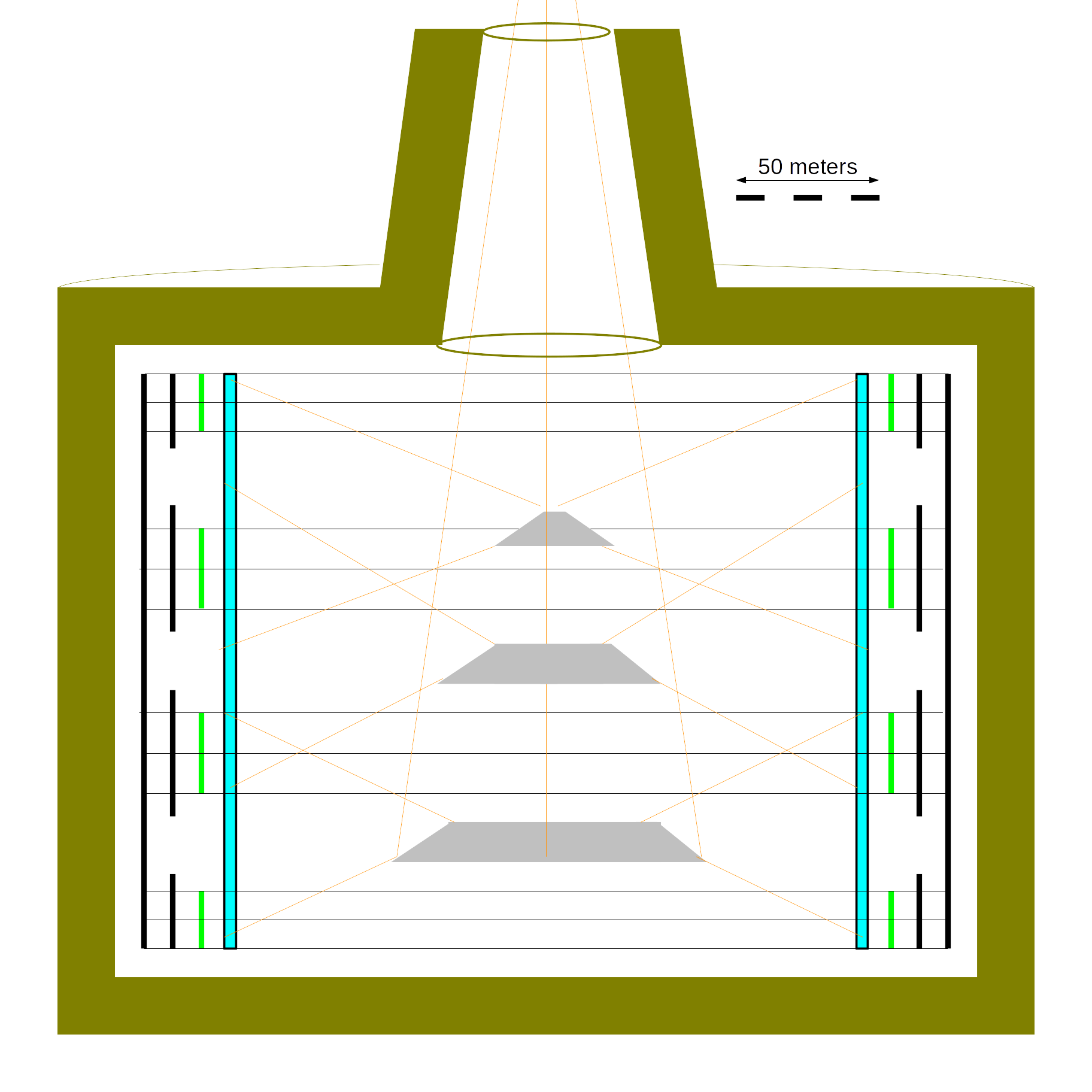Dustball Shielded Asteroid Habitat
The purpose of this page is not to define a habitat design, but to show that a spinning dustball asteroid has too little, not too much, angular momentum for a smallish habitat. This is a work in progress.
The purpose of an asteroid habitat is to provide value. Since the value of an asteroid is negative if it impacts a city, and positive if an adversary is targeting that city (an incoming stealthed impactor is very difficult to detect or stop), perhaps the first asteroid habitats will be associated with the military, similar to a close terrestrial analog of a small asteroid outpost, a military submarine.
The first space habitats are unlikely to be residential communities. They might be like earth colonies, in the original sense of remote settlements established for national military objectives, like the forts the British built in Hindustan, or the United States built in western North America. Commerce comes after (soldiers notice product opportunities), families and full fledged communities decades after that.
So don't look at this as a design for a city in the sky. Those may happen someday, but they certainly won't happen first.
The habitat geometry is a large cylinder, illuminated by diffusing mirrors on the axis from an external focusing mirror. The habitat is surrounded by a thick shield of dustball asteroid material.
Dustball asteroid rotation rates are quite limited by centrifugal disassembly. For 1200 kg/m³ and a 1.25x safety factor, the rotation period must be longer than 3.37 hours or equatorial material will spin away. The dustball asteroid 101955 Bennu has a rotation period of 4.3 hours, close to the limit, and most asteroids rotate more slowly. Dustball asteroids do not spin too fast; if you want to spin up a habitat with the angular momentum in the shielding mass, they spin too slowly.
|
|
As shown, the inner cylinder rotates around its vertical axis, which is perpendicular to the orbital plane. The parabolic mirror focuses sunlight through the narrow hole in the shield; below the focus, the light is diffused by mirrors on the center axis of the habitat to approximate one sun. Hard cosmic radiation will also enter through the hole; the mirrors and the sides of the entry port must be "passivated" so that radiation does not spall particles or gamma rays and scatter energy into the habitat.
The outer shield is a larger non-rotating cylinder, made from the loose material of a spinning dustball asteroid, which also supplies the angular momentum to spin the habitat. As shown, it is 20 meters thick. However, as we will see below (and in the attached spreadsheet), the habitat needs a lot more angular momentum than a smallish asteroid can provide, so the asteroid will probably be large enough to provide a vastly thicker shield, in the range of 50 to 100 meters thick, far more than we need for radiation shielding that matches the Earth's magnetic field and atmosphere.
Note that a very thick shield will have some small self-gravity, and will need some structural material to keep it from sagging inwards. However, with enough structure, gaps, and layers of denser material to generate acoustic reflections, the shield might be able to withstand a large explosion or impact while protecting the habitat wheel inside.
Angular momentum, not asteroid mass, may be the limiting factor in asteroid space habitat construction, unless the material is used to make two counter-rotating habitats joined together. In any case, asteroids do not "spin too fast" for this application.
Bad example, not enough asteroid angular momentum
- Habitat wheel, 1000 kg/m², W = 200 meters wide, R = 140 meters radius. Mass = 2 π R W dens = 1.8e8 kg
- Assume 1 gee, 9.8 m/s² = ω² R = ( 2 π freq )² R, so ω = √0.07 = 0.26458 rad/s, so freq = 0.042 Hz = 2.53 rpm
- Habitat Edge velocity V = ω R = 37 m/s
- Angular momentum L = V R M = 9.1e11 kg m²/s
- Assume Shield thickness 20 m thick, density 1200 kg/m³
- 150 meter inner radius, 170 meter outer radius, 220 meter inner width, 260 meter outer width
Shield Volume = πR₁²W₁ - πR₀²W₀ = π ( 1702*260 - 1502*220 ) m³ = 2360000 m³, Mass ≈ 9.7e9 kg
- Volume of round asteroid = 1986000 m³ = 4 π R³ / 3 so R ≈ 124 meters
- Surface gravity of round asteroid = G M / R² = 6.67408e-11 m³/ kg s² × 9.7e9 kg / 124² m² = 4.2e-5 m/s²
- Assume maximum centrifugal acceleration 0.8 × gravity
thus ω < √( 0.8 × 4/3 × G × ρ ) = 5.18E-4 rad/s → 3.37 hours period
- Maximum asteroid rotation rate ω = √(g/R) = √( 0.8 * 4.2e-5 m/s² / 78 m ) = 5.18e-4 rad/s
- Maximum asteroid angular momentum L = 0.4 M R V = 0.4 × 2e9 × 78² × 5.3e-4 = 3.1e10 kg m²/s
We need a factor of 30 more asteroid angular momentum, so we must harvest a lot more asteroidal material, and use most of it for static operations, like building huge telescope mirrors and the associated stabilizing masses.
We can also deploy multiple pairs of counter-rotating habitats, though for strategic and economic regions the counter-rotating pairs should be small, many, and widely separated.
Libreoffice Calc ods spreadsheet . . . . (download free, open source libreoffice here )
Near Earth asteroid 101955 Bennu has a mass of 7.3e10 kg, a mean density of 1200 kg/m³, a mean radius of 245 m, and a rotation period of 15500 seconds. L = 0.4 M R² ω = 7e11 kg m²/s, not quite enough!


